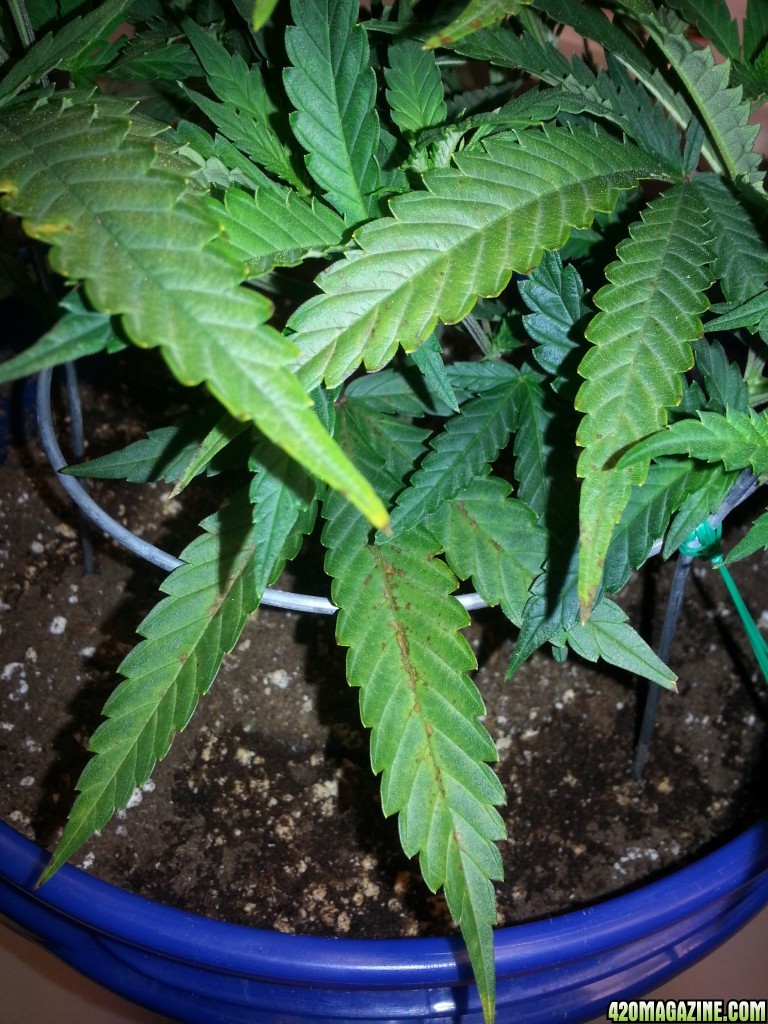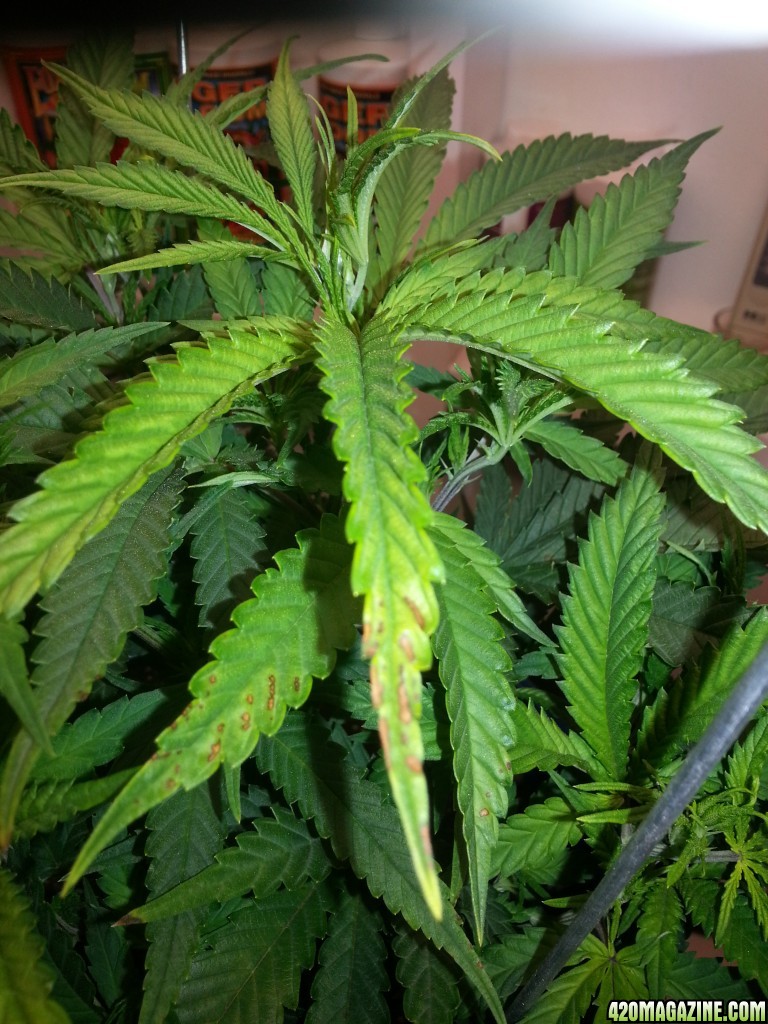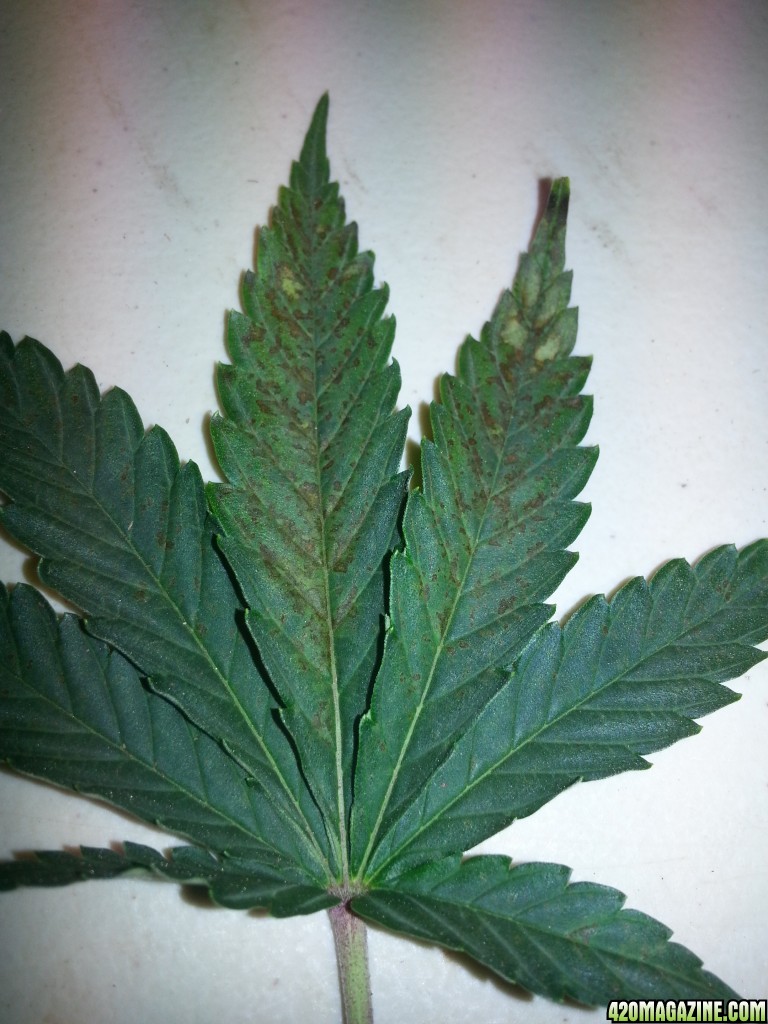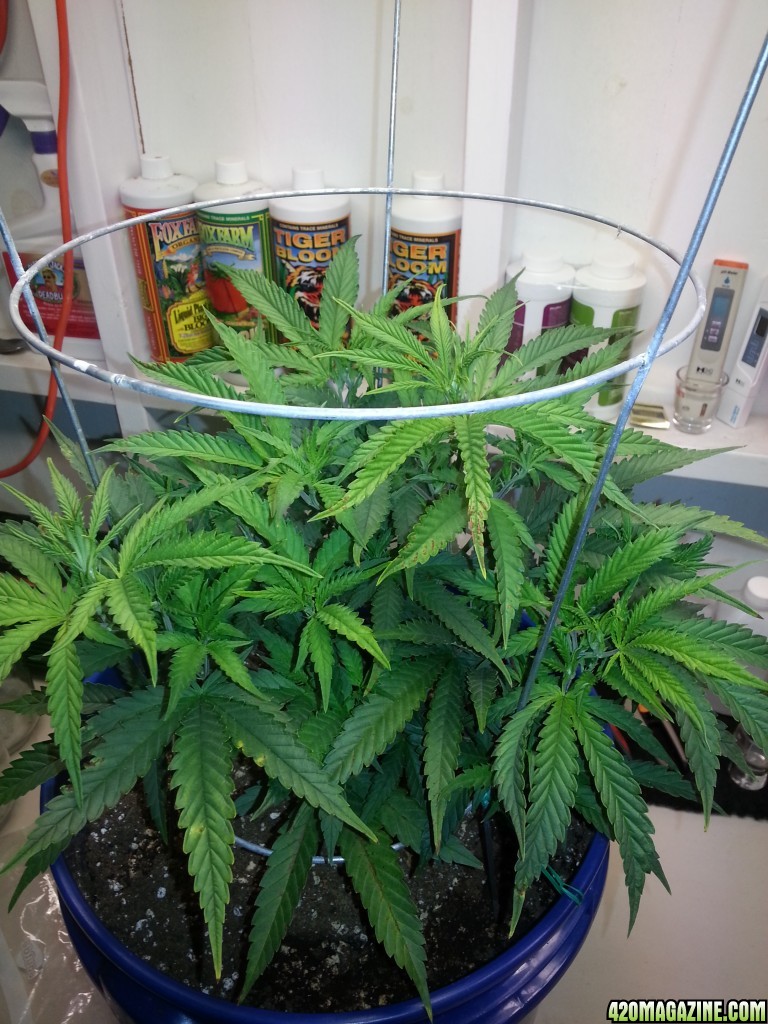Ripples
Well-Known Member
Having problems with brown spots on the leaves. Nothing major but I can't seem to shake it! Started last grow towards the end. Finished fine 27 oz. (9 plants Chronic) But having the same issue again. Started from clones (mother)... Thought it was magnesium deficiency so I fed some CaMg+ a few times but with no change. (been 2 weeks) Starting to think maybe a manganese deficiency? Look very similar. Not sure the difference between the two? even spelled the same almost! Don't believe I'm making matters worse by adding some CaMg+ occasionally. Maybe Calcium deficiency and a little light burn? Going to bring my PH tester in for a check? I re-cal but not feeling confident? Been having doubts as to whether it is reading correctly. Double checking with drops. They seem close running 6.3-7.0..... Was thinking of flushing but this is a new grow and only fed twice. Some info on my set up. 4x4x7 tent, soilless 70% peat moss 30% perlite, FF Nutes, CaMg+, RH 55-60, Temps 77-84, 8" inline passive flow, 1000 mh.










